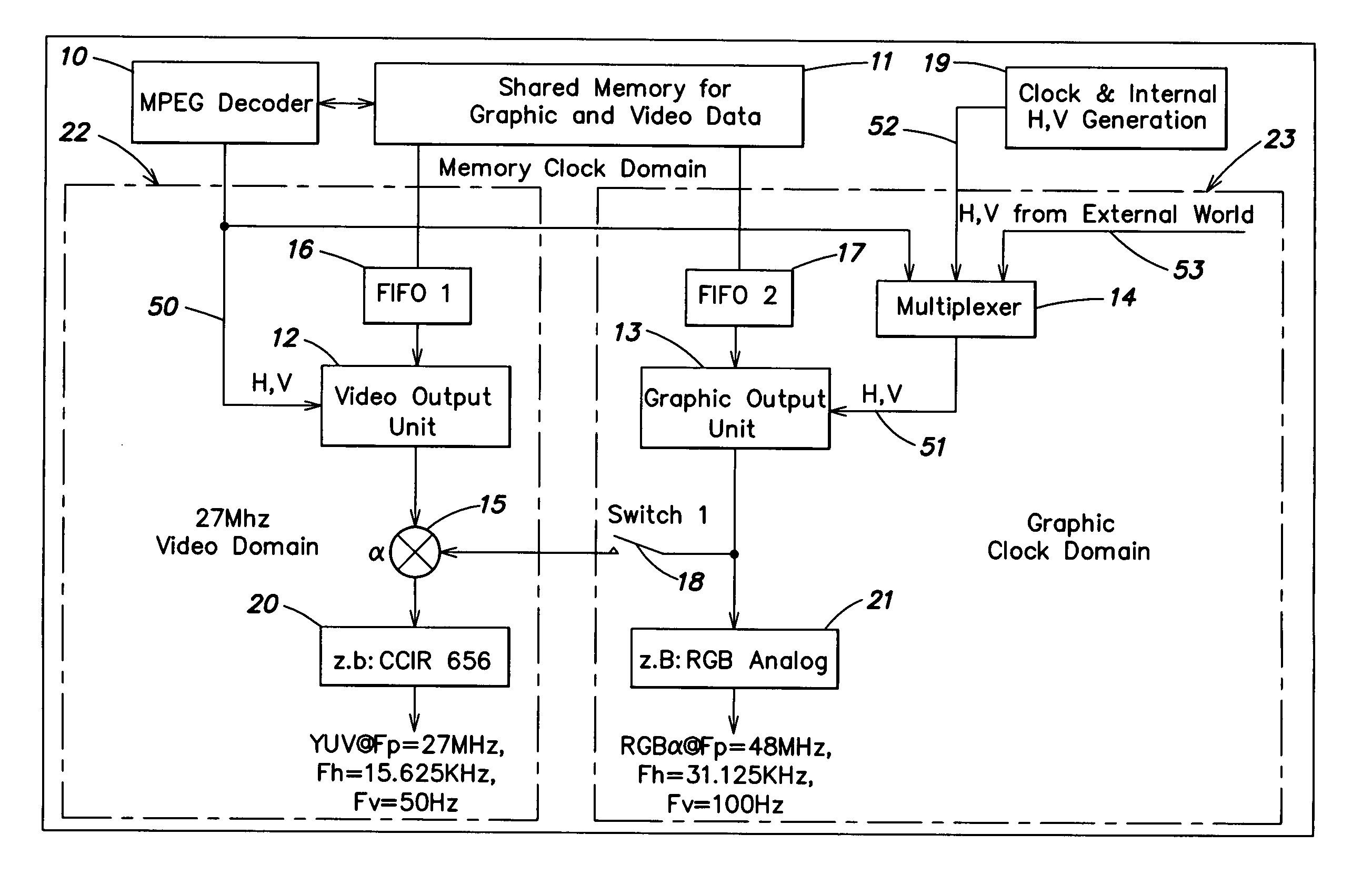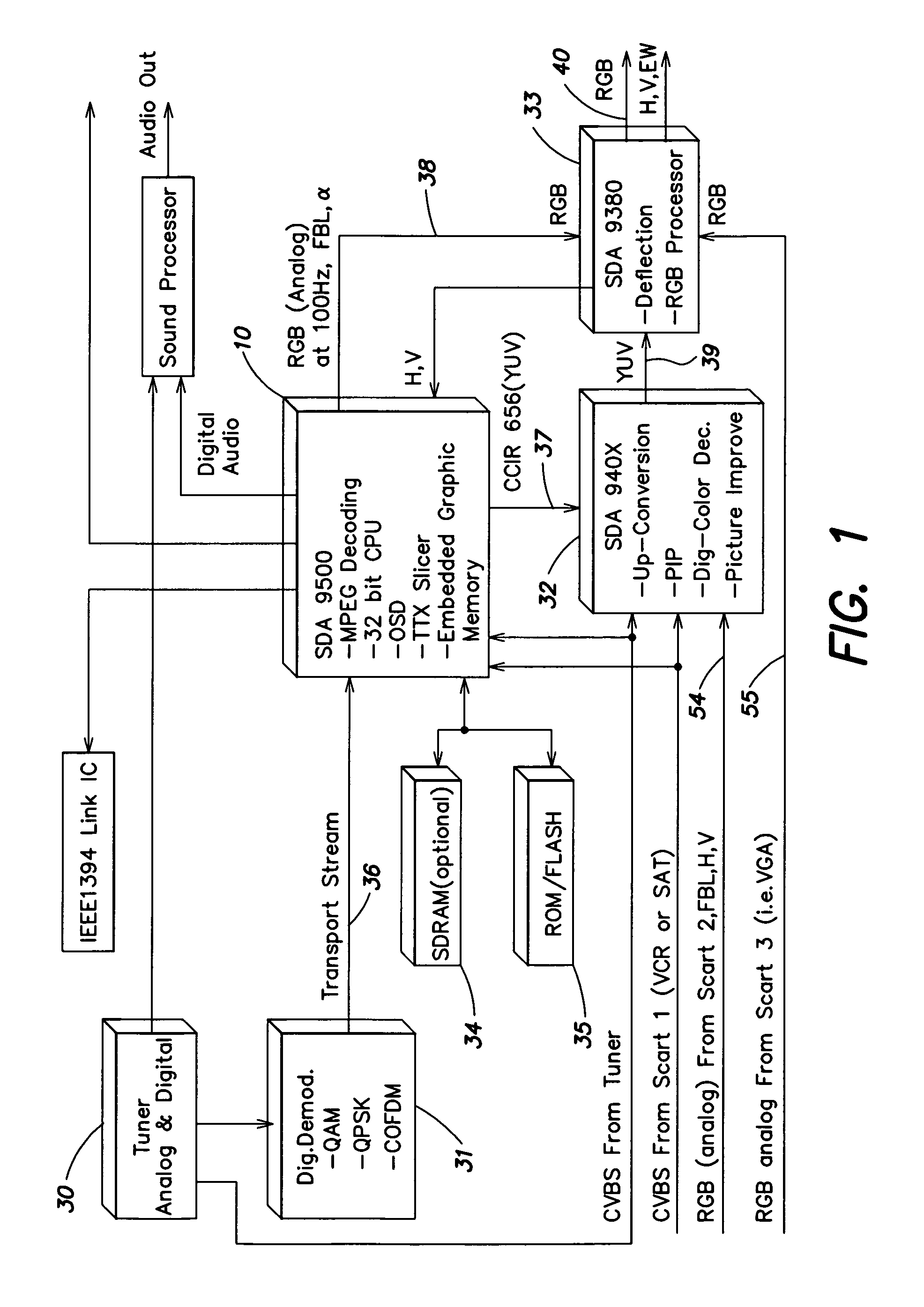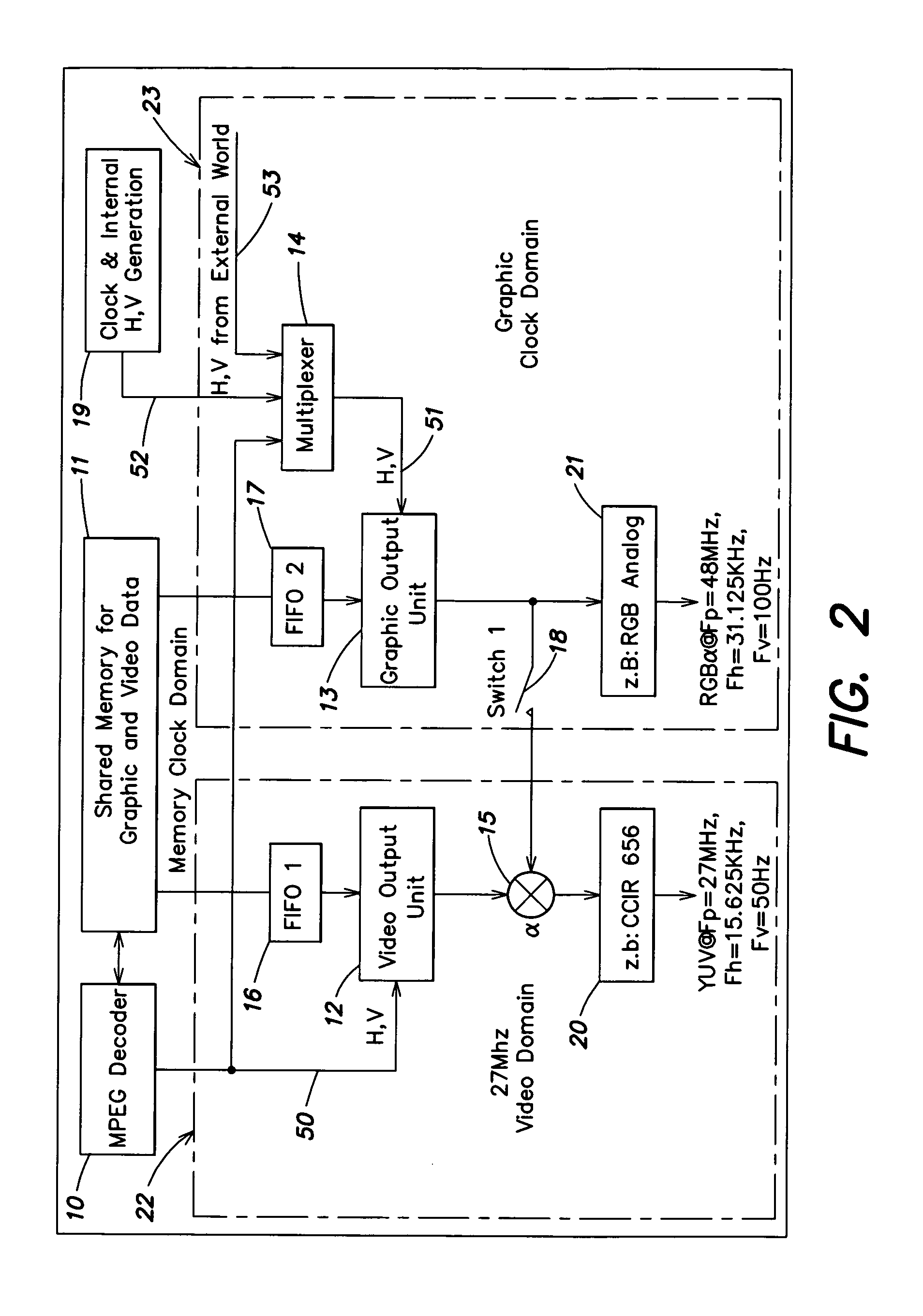System for displaying graphics in a digital television receiver
a digital television and receiver technology, applied in the field of digital television, can solve the problems of complex circuits that must be provided, problems that may also occur, and no integrated chip set is available for such applications, and achieve the effect of avoiding the conversion of rgb signals or graphics data to a different frequency raster
- Summary
- Abstract
- Description
- Claims
- Application Information
AI Technical Summary
Benefits of technology
Problems solved by technology
Method used
Image
Examples
Embodiment Construction
[0016]Referring to FIG. 1, a system for displaying graphics data and video data in a digital television receiver includes an MPEG decoder 10 (for example component SDA 9500) to which a digital data stream 36 is fed from a digital demodulator 31 which demodulates signals modulated by one of the modulation methods QAM, QPSK or COFDM. The digital demodulator 31 receives digital signals from an analog and digital tuner 30 which receives analog and / or digital television signals.
[0017]The MPEG decoder 10 decodes from the supplied data stream 36 a digital YUV signal 37 and provides this signal on the line 37 in 50 Hz format to a CCIR656 output of the decoder 10 in the form of digital data. The digital data typically include horizontal, vertical, and synchronization components, as well as a sampling rate of 27 MHz. The YUV signal on the line 37 in 50 Hz format represented by the digital data is up-converted by a converter 32 (for example component SDA 940x) to the 100 Hz format and is avail...
PUM
 Login to View More
Login to View More Abstract
Description
Claims
Application Information
 Login to View More
Login to View More - R&D
- Intellectual Property
- Life Sciences
- Materials
- Tech Scout
- Unparalleled Data Quality
- Higher Quality Content
- 60% Fewer Hallucinations
Browse by: Latest US Patents, China's latest patents, Technical Efficacy Thesaurus, Application Domain, Technology Topic, Popular Technical Reports.
© 2025 PatSnap. All rights reserved.Legal|Privacy policy|Modern Slavery Act Transparency Statement|Sitemap|About US| Contact US: help@patsnap.com



